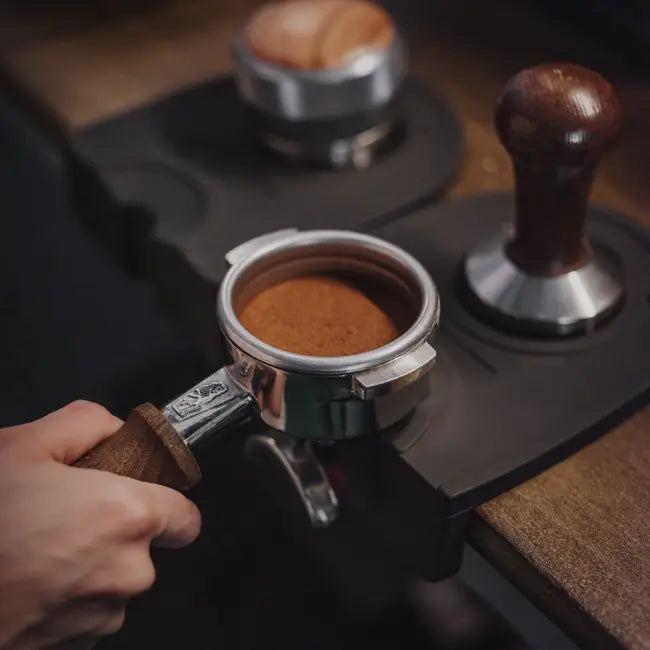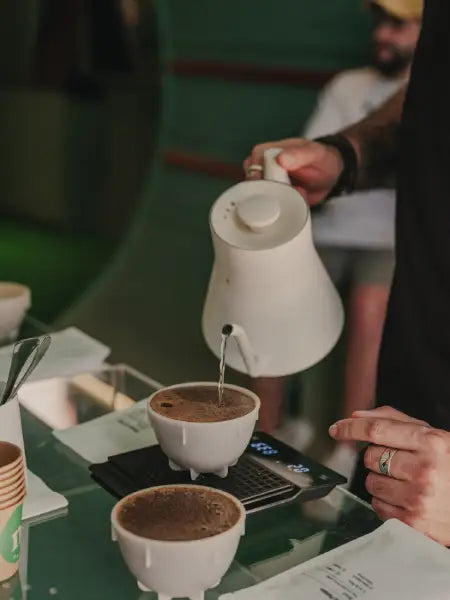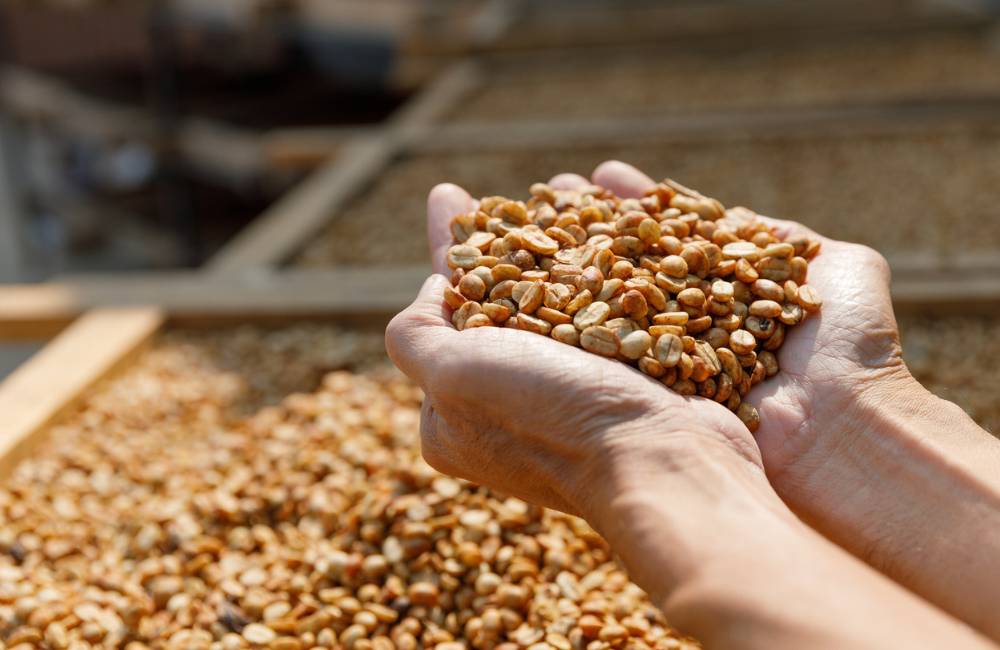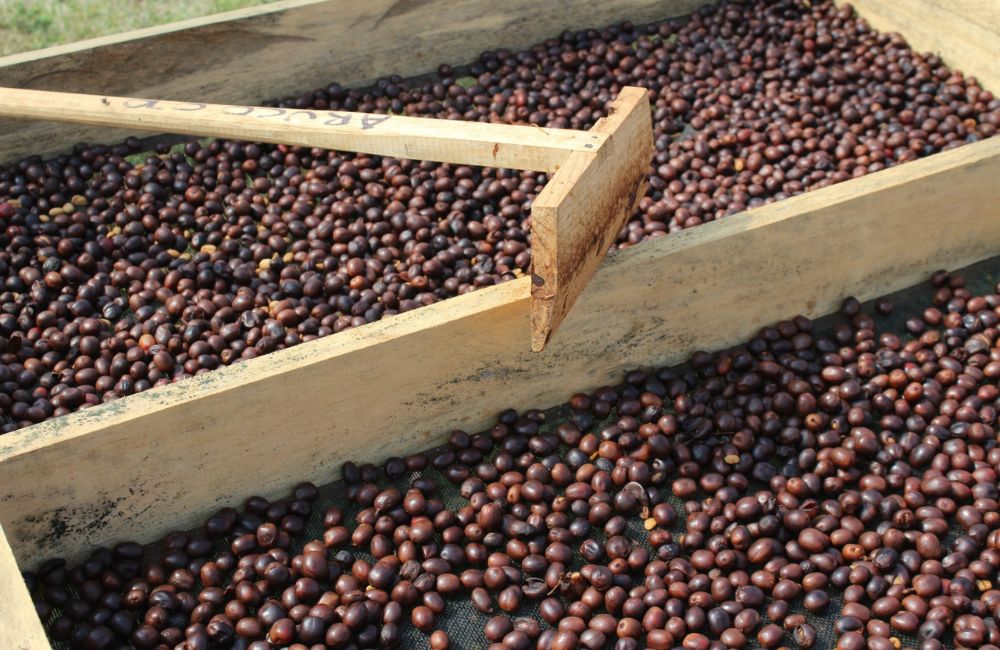El café con proceso honey
El café proceso honey hace referencia al proceso de separación y secado de las semillas de café de la cereza. En un proceso honey, una vez recogidas las cerezas, las semillas se despulpan, pero se les deja parte del mucílago, que es eliminado una vez están secas.
El proceso honey es uno de los tres métodos principales de procesado del café una vez se han recogido las cerezas. Los otros dos métodos son el lavado y el natural (de los cuales hablamos en este post y en este). Existen más métodos e innumerables variaciones de los mismos, pero estos tres son los principales y los que debe conocer cualquier amante del café de especialidad.
El proceso honey es un método que está a camino entre un lavado y un natural e intenta aplicar lo mejor de estos dos procesos. A este proceso también se le llama “pulped natural”, sobre todo en Brasil, y su nombre define el proceso: “pulped” porque primero se despulpa y “natural” porque luego se deja secar como un natural. También se conoce como “honey process” o “semi-lavado” en otros países de origen.
El proceso de un café honey
Cuando hablamos de los procesos del café nos referimos al orden y la forma en la que se separan las diferentes partes de la cereza de café para dejar las semillas libres y secas, que es lo que comúnmente conocemos como café verde (antes de ser tostado).
Para entender esto es útil mencionar brevemente la anatomía de una cereza de café, puesto que nos ayudará comprender mejor cada proceso, cómo y por qué afectan a las semillas y, finalmente, a nuestra taza.
Una cereza de café es el fruto de los cafetos. Esta cereza esconde en su interior dos semillas, como muchas otras frutas. Son las semillas del interior de la cereza lo que utilizamos para hacer café.
Entre las semillas, que están escondidas en el interior, y la cascara, que está en el exterior, hay varias capas que, en orden concéntrico de fuera hacia dentro serían: cáscara, mucílago, pergamino, película plateada y semilla.
En un café honey process las cerezas, una vez cosechadas, son despulpadas y se dejan solo las semillas envueltas por el mucílago. Una vez despulpadas y con el mucílago, las semillas se dejan secar hasta evaporar toda la humedad. Más tarde se elimina el mucílago y el pergamino. Las semillas de café estarían listas para tostar.
Fases del café proceso honey

Semillas de café durante el secado aún recubiertas por el mucílago
Existen varios tipos de café honey process: amarillo, rojo y negro. Lo que diferencia a uno de otro es la cantidad de mucílago y/o el tiempo que se dejan secar las semillas con el mucílago. Esto, en realidad, es un gran cambio que entenderemos mejor si conocemos el proceso fase por fase y el perfil de taza que crea.
1. La cosecha. Las cerezas de café deben siempre recolectarse en su momento óptimo de maduración.
2. Las cerezas de café se despulpan. En este proceso se elimina la cáscara dejando parte del mucílago con las semillas.
3. Secado. Las semillas se dejan secar en camas elevadas o en un pavimento junto al mucílago. El tiempo de secado dependerá de la variedad, las condiciones climáticas y el tipo de proceso honey que quiere conseguir el caficultor: amarillo, rojo o negro.
Por eso este proceso puede durar de una a dos semanas. Durante este tiempo las semillas deben moverse regularmente para que se dé un secado uniforme y no surjan defectos.
Yellow honey

Semillas de café secándose por un proceso honey yellow
El café yellow honey es un café que ha seguido el proceso anterior y que probablemente tenga alrededor de un 25% de mucílago.
El proceso de secado se acelera a través de diferentes trucos, sombra y sol y adquiere un color amarillento.
Esto suele suceder entre los primeros cinco y siete días, antes de que el mucílago adquiere un color rojizo y luego negro.
El perfil de taza de un café yellow honey es parecido al de un lavado, con notas limpias que destacan la variedad, el terroir, el clima etc. pero con notas dulces y afrutadas fruto de la fermentación y transferencias de azúcares del mucílago a la semilla.
Red honey

Semillas de café secándose por un proceso honey red
En el café red honey se extiende el secado un poco más. También, probablemente hablemos de una cantidad de mucílago de alrededor del 50% y se seca hasta que el mucílago ha adquirido un color rojizo. Este proceso suele tardar entre una semana y diez días, aunque todo esto depende de las condiciones climáticas.
En un café red honey empezamos a notar más las notas afrutadas y dulces, puesto que ha dado más tiempo para que los azúcares del mucílago fermenten y se transfieran a la semilla.
Black honey

Semillas de café secándose por un proceso honey black
El café black honey se ha dejado secar hasta que el mucílago ha adquirido un tono negruzco. Para esto se deja prácticamente el 100% del mucílago y se seca bajo sombra para alargar el proceso. Suele tardar de diez días a dos semanas, siempre dependiendo de las condiciones climáticas.
El black honey es el más difícil de conseguir de los tres tipos de café proceso honey. Esto se debe a que, al dejarse más tiempo, se corre el riesgo de que se fermente demasiado, de que surjan defectos o le ataque algún microbio o plaga. Por esta razón requiere de una atención constante.
El perfil de taza de un black honey se acerca mucho al de un natural, con una dulzura compleja y notas afrutadas, pero sin llegar a la intensidad de este y pudiendo mantener una acidez limpia.
¿Café natural, lavado o honey?
No existe una respuesta genérica a esta pregunta. En esta serie sobre los diferentes procesos del café hemos abordado el café lavado, natural y honey. Lo que queríamos no era, en ningún caso, decidir si uno es mejor que otro, sino acercaros de una forma clara qué significan estos procesos y cómo afectan al café.
Elegir un proceso u otro es una decisión del caficultor, que es quien mejor conoce su café y cómo sacarle el mayor partido. Todos los procesos son buenos si los resultados lo son.
Conocer estos procesos nos ayuda a conocer mejor la bebida que tanto nos gusta, a ser capaces de percibir mejor sus notas de cata y a ser conscientes del trabajo que va en cada taza por parte de todos los involucrados en la cadena de producción cafetera. En resumen, a disfrutar más de nuestro café.
En Ineffable Coffee siempre tenemos en cuenta el proceso, tanto a la hora de seleccionar cafés, como en el momento de elegir el perfil de tueste.









